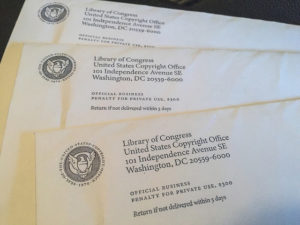The characters created by Disney, Marvel, and LucasFilms are valuable intellectual property and are protected both by copyright and by trademark. However, a recently decided case in the Southern District of New York (SDNY), Disney Inc. v. Sarelli, 322 F.Supp.3d 413 (2018), demonstrates that preventing the unauthorized use of such characters may not be as easy as expected.
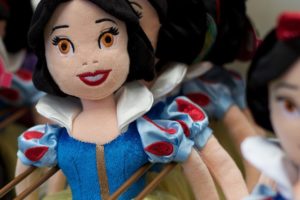 In this case, Plaintiffs are Disney Enterprises, Marvel Characters and LucasFilm, all of which own copyrights and trademarks in many of the most famous characters in the world, such as Mickey Mouse, Hulk, and Chewbacca. These characters were first featured in movies like Frozen, The Avengers or Star Wars, and are now licensed or featured in derivative products such as comic books, video games, or theme parks. Their exploitation is highly lucrative.
In this case, Plaintiffs are Disney Enterprises, Marvel Characters and LucasFilm, all of which own copyrights and trademarks in many of the most famous characters in the world, such as Mickey Mouse, Hulk, and Chewbacca. These characters were first featured in movies like Frozen, The Avengers or Star Wars, and are now licensed or featured in derivative products such as comic books, video games, or theme parks. Their exploitation is highly lucrative.
When visiting Plaintiffs’ theme parks, one has a chance to meet the characters “in person.” This experience is also offered by Characters for Hire, a New York company offering, as the name implies, character hiring services. The company’s principal owner is Nick Sarelli (Defendant). Characters for Hire offers a service wherein actors dressed in costumes entertain guests during birthday parties or corporate events. For example, actors have allegedly dressed as Mickey, Elsa and Anna from Frozen, Captain America and Hulk from The Avengers, and Luke Skywalker and Darth Vader from Star Wars.
The contracts Defendants provided to their clients contained disclaimer language, stating, for example, that Defendants do not use trademarked and licensed characters. The contracts also warned clients that the costumes may differ from those seen in movies “for copyright reasons,” adding that “[a]ny resemblance to nationally known copyright character is strictly coincidental.”
These disclaimers did not appease Plaintiffs, who sent several cease and desist letters to Defendants before filing a federal copyright and trademark infringement suit and a New York trademark dilution suit.
While Judge Daniels from the SDNY granted Defendants’ motion for summary judgment and dismissed Plaintiffs’ claim for trademark infringement on August 9, 2018, he denied the motion to dismiss the copyright infringement claim and the trademark dilution claim.
The descriptive fair use defense failed
Plaintiffs claimed that the use of their trademarked characters to advertise and promote Defendants’ business, along with their portrayal by costumed actors, was likely to confuse consumers as to the origin of the services.
Defendants argued that their use of Plaintiffs’ characters was descriptive and nominative fair use, and that there was no likelihood of confusion.
Descriptive fair use is an affirmative defense to a trademark infringement suit, as Section 33(b)(4) of the Trademark Act allows “use… of a term or device which is descriptive of and used fairly and in good faith [but] only to describe the goods or services of such party, or their geographic origin.” In other words, a defendant can use plaintiffs’ trademarks in a descriptive sense, or to describe an aspect of his own good or service.
For such a defense to succeed in the Second Circuit, a defendant must prove that the use was made (1) other than as a mark, (2) in a descriptive sense, and (3) in good faith (Kelly-Brown v. Winfrey at 308). This defense failed in the present case, as Defendants had not made a descriptive use of Plaintiffs’ marks. Instead, Judge Daniels found that their ads “were specifically designed to evoke [Plaintiff’s marks] in consumers’ minds…”
The nominative fair use defense also failed
Defendants also claimed that they used Plaintiffs’ marks to describe their own products. Such nominative fair use is a defense to a trademark infringement suit if such use “does not imply a false affiliation or endorsement by the plaintiff of the defendant” (Tiffany v. eBay at 102-103). But this nominative fair use defense also failed, as Defendants used Plaintiffs’ marks to identify their own service, which is hiring out characters for parties, rather than Plaintiffs’ trademarked characters.
Defendants’ use of characters was not trademark infringement
Judge Daniels used the eight-factor Polaroid test used by the Second Circuit in trademark infringement cases to determine whether Defendants’ use of Plaintiffs’ marks were likely to confuse consumers.
While Plaintiffs’ marks are undoubtedly strong (first factor), the similarity of the marks (second factor), weighed only slightly in Plaintiffs’ favor because Defendants used different names for their characters than Plaintiffs’ trademarked character names, e.g., “Big Green Guy,” “Indian Princess,” and “The Dark Lord” instead of Hulk, Pocahontas and Darth Vader.
The third and fourth Polaroid factors, the proximity of the goods and services, and the possibility that the senior user will enter the market of the junior user, were found to weigh in Defendants’ favor. There was no evidence that Plaintiff has plans to expand into the private entertainment service industry.
The fifth Polaroid factor, evidence of actual confusion, also weighed in Defendants’ favor, as there was no evidence that Defendants’ customers used the names of Plaintiffs’ trademarked characters when referring to Defendants’ services in online reviews or otherwise. Plaintiffs could not provide a survey proving customers’ confusion either.
Judge Daniels found the sixth factor, Defendants’ intent and evidence of bad faith, to also be in Defendants’ favor, since Defendants had put customers on notice that their services were not sponsored by or affiliated with Plaintiffs by using altered versions of Plaintiffs’ characters’ names and by removing Plaintiffs’ characters’ names in their online reviews.
The seventh Polaroid factor, the quality of Defendants’ products, was also in Defendants’ favor, as Defendants’ services, being of a lesser quality than Plaintiffs’, makes it likely that consumers will not be confused as to the source of the services.
The eighth Polaroid factor, consumer sophistication, also was in favor of Defendants, as Plaintiffs did not prove the sophistication level of Defendants’ relevant consumers.
Balancing these eight factors, the SDNY found no likelihood of consumer confusion and denied Plaintiffs’ motion for summary judgment on their trademark infringement claim.
Trademark dilution
Plaintiffs chose to claim trademark dilution under New York trademark dilution law, Section 360-1 of New York Business Law, and not under the Federal Trademark Dilution Act. This choice may have been made because the New York law does not require a mark to be famous to be protected, and a plaintiff only needs to prove the mark’s distinctiveness or secondary meaning.
Judge Daniels found that there was a genuine issue of fact as to whether Defendants’ use of Plaintiffs’ marks is likely to dilute Plaintiffs’ marks by tarnishment. A court will have to determine if Defendants provide services of poor quality.
Copyright
Plaintiffs argued that Defendants had “copied and used the images, likenesses, personas, and names of Plaintiffs’ characters…to promote and advertise its services online.” Defendants argued in response that the characters in which Plaintiffs own copyrights are based on prior works that are part of the public domain.
Both parties will have more chances to pursue their arguments as Judge Daniels denied the motion for summary judgment on copyright infringement. He found that Plaintiffs had presented as evidence screenshots from Defendants’ website and videos allegedly published by Defendants which had not been properly authenticated. More specifically, they had not been authenticated by someone “with personal knowledge of reliability of the archive service from which the screenshots were retrieved,” citing Specht v. Google, a 2014 Seventh Circuit case.
This post has been first published on the TTLF Newsletter on Transatlantic Antitrust and IPR Developments published by the Stanford-Vienna Transatlantic Technology Law Forum.
Image id courtesy of Flickr User Alan Levine, Public Domain.
 “No one can own a dance step”
“No one can own a dance step”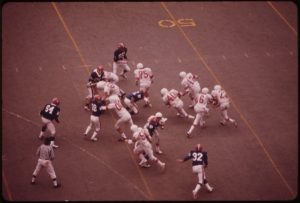
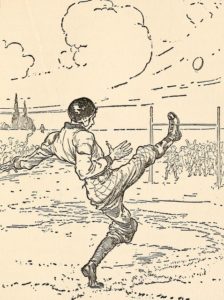
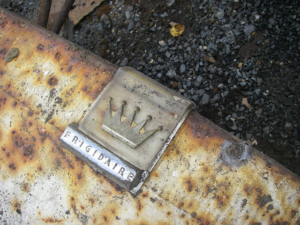 But copyright laws are not snobbish and protect masterpieces and more humble works alike, as long as they are original enough.
But copyright laws are not snobbish and protect masterpieces and more humble works alike, as long as they are original enough.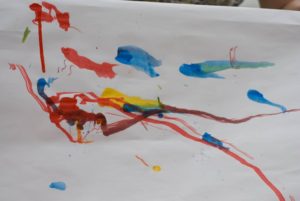
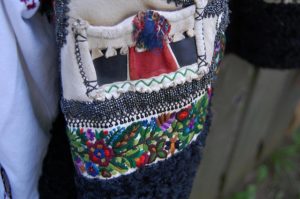

 The design was used by Plaintiff on several models, a tote, a coin purse, which Plaintiff started selling in late 2014, early 2015. This season, Balenciaga sold a
The design was used by Plaintiff on several models, a tote, a coin purse, which Plaintiff started selling in late 2014, early 2015. This season, Balenciaga sold a